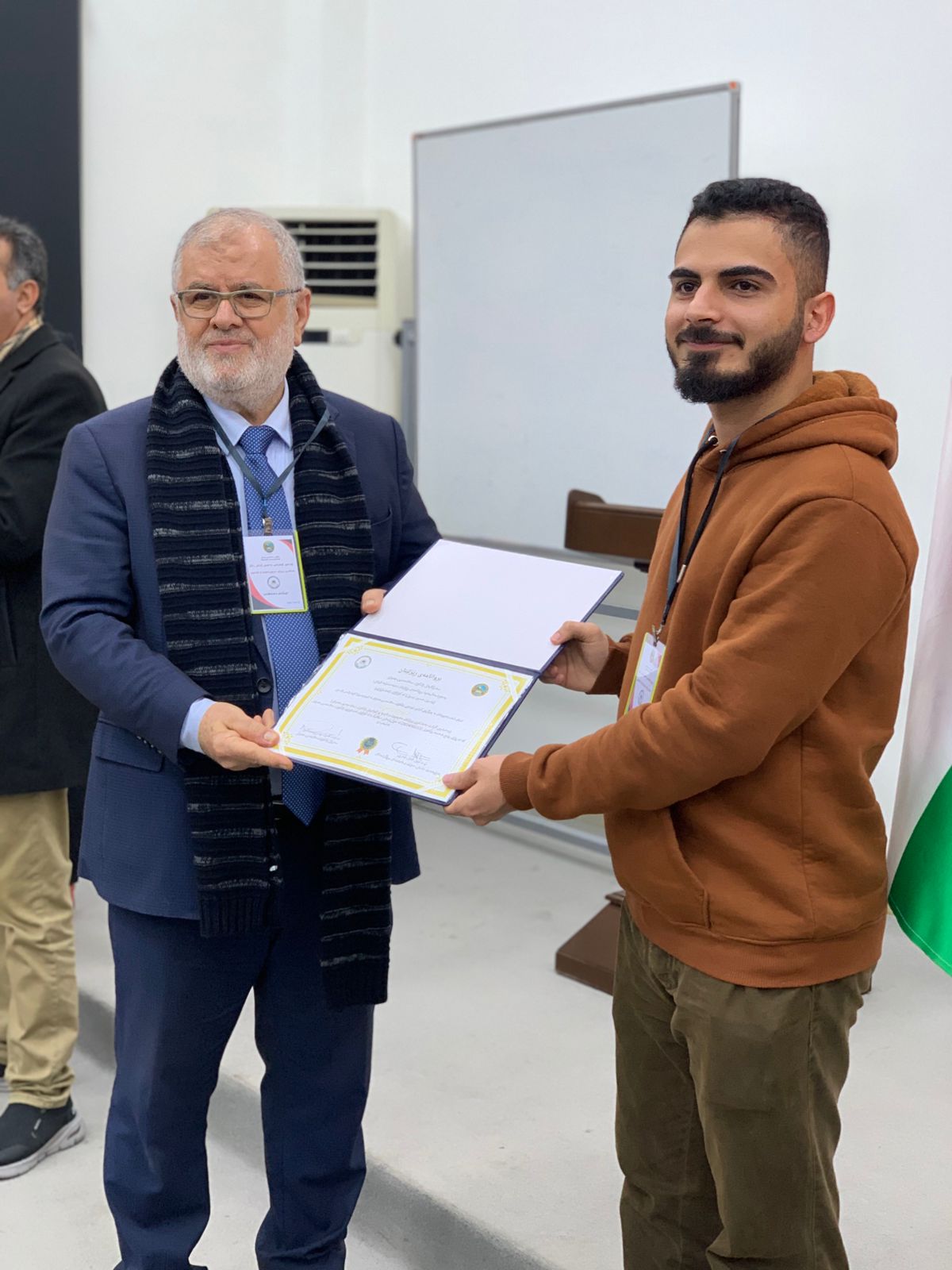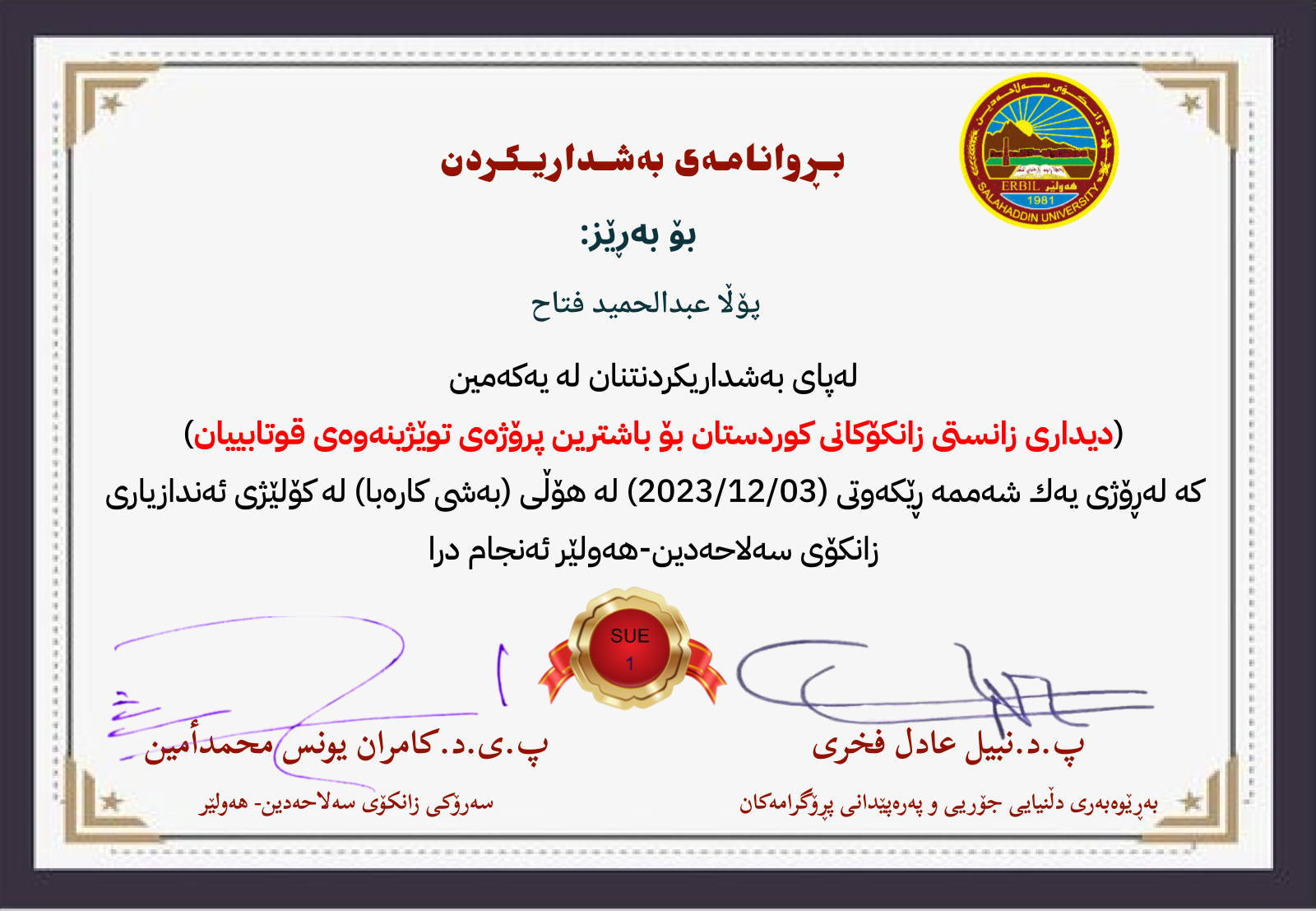On December 3, 2023, we presented our Hadith research project to BSc students at Salahaddin University-Erbil. This presentation provided an opportunity to share our ongoing work exploring the potential integration of traditional Islamic scholarship with computational methods.
Project Overview
Our Hadith research project represents the continuation of our initial research initiative from 2022, where we outlined our vision for bridging classical Islamic scholarship with modern computational methods.
Building on that foundation, we have developed a digital Hadith repository by collecting a substantial database of Hadiths from various major collections. The project explores how modern technology might be used to showcase Islamic heritage while potentially opening new avenues for scholarly research.
The project includes a digital database containing Hadiths from various major sources in a structured format, alongside a web interface designed for browsing and exploring the collection. We have also begun initial investigations into graph theory applications for analyzing narrator networks and transmission chains, while developing preliminary proposals for computational approaches to Hadith classification and evaluation.

Presentation Highlights
During our presentation, we demonstrated several key aspects of the project:
Technical Approach
We presented how computational methods might potentially complement traditional Hadith studies while respecting the scholarly methodologies that have been developed over centuries. The system explores graph theory to potentially model relationships between narrators and transmission chains, utilizes database systems for structured storage and retrieval of Hadith collections, employs web technologies to provide accessible interfaces for researchers, and applies computational analysis for exploring patterns in large-scale textual data.
Educational Impact
The presentation emphasized how this project serves as an example of interdisciplinary research, combining computer science methodologies with Islamic studies scholarship, digital humanities approaches, and data science techniques. This integration demonstrates the potential for cross-disciplinary collaboration in academic research.
Research Methodology
We outlined our approach to developing this system, which includes:
- Data Collection: Gathering and digitizing Hadiths from various major sources
- Website Development: Creating a platform to showcase the collected Hadith database
- Graph Theory Exploration: Investigating potential applications of graph-based analysis to narrator chains and transmission networks
- Ranking System Development: Exploring computational approaches for Hadith classification and evaluation
- Research Presentation: Sharing the system’s current capabilities and discussing future research directions
Student Engagement and Recognition
The presentation was met with positive response from the BSc students, who showed interest in how technology can be applied to preserve and enhance Islamic heritage. The interactive session that followed allowed students to ask technical questions about the implementation, understand the challenges of digitizing classical texts, explore career opportunities in digital humanities, and discuss the ethical considerations of applying computational methods to religious texts.
Project Website and Resources
For those interested in learning more about our research, we have established a dedicated website at hadithresearch.org where visitors can access project documentation, view research publications, download presentation materials, contact the research team, and stay updated on project developments.
Academic Recognition
This presentation was formally recognized by the university, and certificates were awarded to acknowledge the research effort and its potential contributions to Islamic studies and digital humanities.
This recognition reflects the university’s interest in interdisciplinary approaches that seek to combine traditional scholarship with modern technology, suggesting that computational methods may offer complementary tools for classical research methodologies.

Future Directions
The positive reception of our presentation has encouraged us to continue developing this project. Our future plans include:
Technical Enhancements
Our future technical development plans include expanding the database to include additional Hadith collections and sources, enhancing the website interface and user experience, and developing advanced graph theory applications for narrator network analysis. We also aim to implement and refine the novel Hadith ranking system, create mobile applications for broader accessibility, and implement multilingual support for international scholars.
Academic Collaboration
We plan to pursue partnerships with Islamic universities worldwide and collaborate with traditional Hadith scholars to ensure our work remains grounded in established scholarship. Additionally, we hope to publish research findings in peer-reviewed journals and organize workshops and training sessions to share our methodologies with the broader academic community.
Community Outreach
Our outreach goals include making the system available to Islamic schools and institutions, developing educational materials for students, and creating documentation in multiple languages. We also plan to establish user support and feedback mechanisms to ensure the system meets the needs of its intended users.
Conclusion
The presentation of our Hadith research project provided an opportunity to explore how technology might potentially serve traditional scholarship in respectful ways. By investigating how computational methods could complement classical Islamic scholarship, we aim to contribute to ongoing discussions about the intersection of technology and Islamic studies.
This project represents our ongoing effort to conduct research that respects traditional methodologies while exploring the potential applications of modern technology. As we continue to develop this work, we hope to create tools that may be useful to the community of Islamic scholars and students.
The positive response from BSc students and the recognition from the university encourage us to continue this research, exploring potential connections between classical scholarship and contemporary computational approaches.
For more information about our Hadith research project, please visit hadithresearch.org or contact our research team.